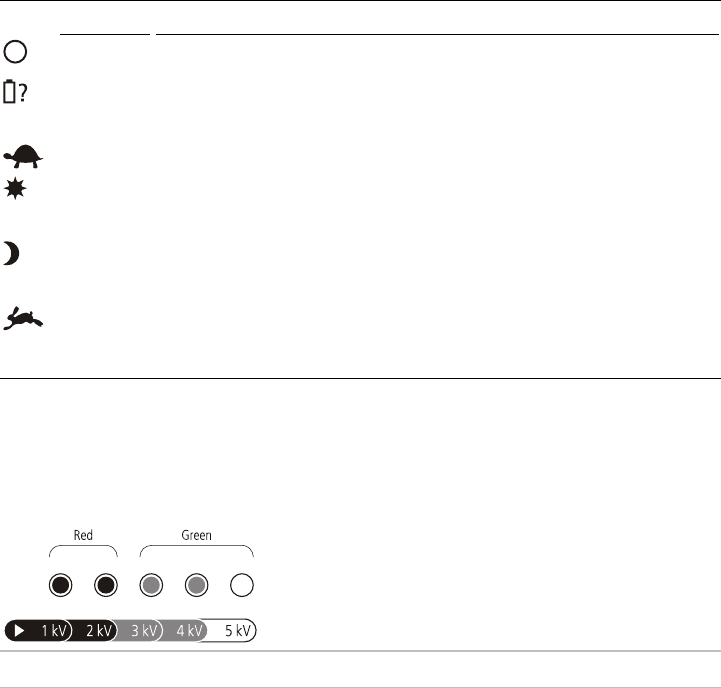
4
Operation
Select the pulse speed setting using the pulse speed switch.
Pulse speed switch
Setting
Description
Off The energizer is off and is not operating.
Fast with
Battery Test
The energizer continues to operate at Fast speed (approximately 1.5 seconds between pulses),
but the Indicator lights show the battery level. See
Battery test setting
on page 5 for an
explanation of the Indicator lights.
Slow The energizer is operating at Slow speed (approximately 2.5 seconds between pulses).
Fast - Day
Slow - Night
The energizer is operating on Fast setting during the day and Slow setting at night. This setting
is for diurnal livestock and is a useful way of conserving battery power when a battery is being
used to power the energizer.
Slow - Day
Fast - Night
The energizer is operating on Slow setting during the day and Fast setting at night. This setting
is for nocturnal livestock and is a useful way of conserving battery power when a battery is
being used to power the energizer.
Fast The energizer is operating at Fast speed (approximately 1.5 seconds between pulses).
Reading voltage
The Indicator lights show the voltage at the output terminals of the energizer.
When first connected to the power source, all the Indicator lights illuminate. They then illuminate separately from left to
right and back again. This indicates that the energizer is operating normally.
After three seconds, the energizer starts pulsing. Each Indicator light segment represents an increment of approximately
1 kV (1000 V) of output voltage. For example, if the first four Indicator light segments are illuminated at each pulse, the
output voltage is approximately 4 kV (4000 V).
Note:
If five Indicator light segments are illuminated, the output voltage may be more than 5 kV (5000 V).
After about 20 seconds, the energizer ceases to display the output voltage and one Indicator light segment illuminates
each time the energizer pulses.
If you see only red lights at each pulse and no green lights, your fence line is very heavily loaded, and you will need to look
for faults on the fence line. See
Frequently asked questions/Troubleshooting
on page 10.














